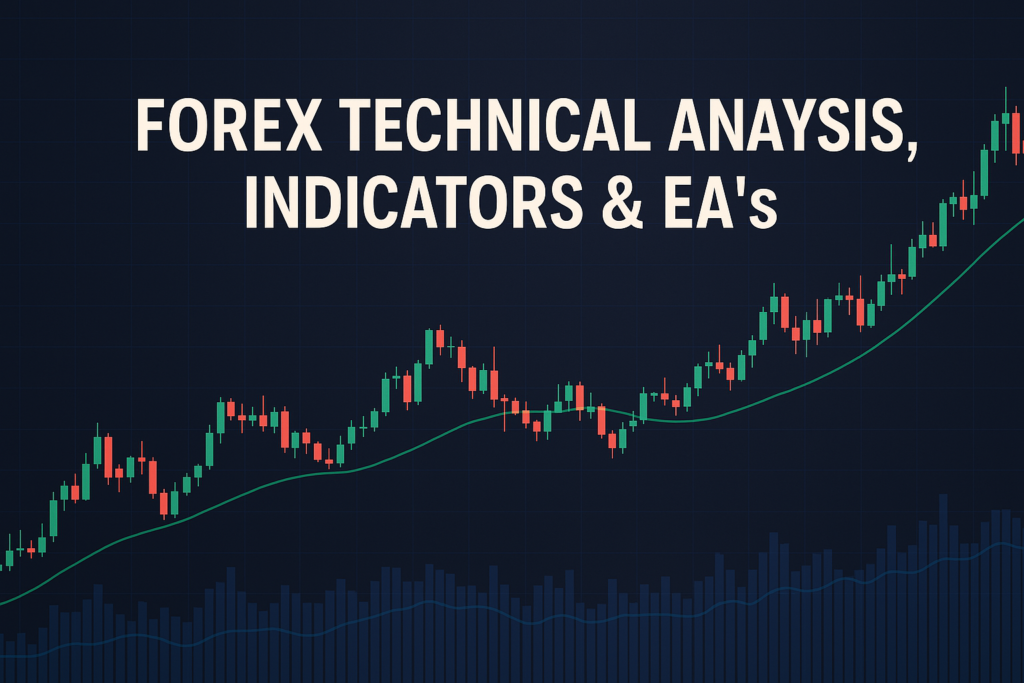
Stochastic chart is a vital tool in Forex trading, helping traders identify trends and potential reversals for better decision-making.
The stochastic chart is a powerful tool in the world of Forex trading. It measures the momentum of price movements, helping traders identify potential buy and sell opportunities. By visualizing how current prices relate to past prices, traders gain insights into market trends and reversals. This tool can be a game-changer for many, as it helps in making informed trading decisions.
However, understanding the stochastic chart can be challenging for both beginners and seasoned traders. Many struggle to interpret the signals it provides, leading to missed opportunities or costly mistakes. The stochastic chart’s complexity often intimidates traders, making it essential to grasp its fundamentals for successful trading.
In this article, we’ll dive into the stochastic chart, exploring its workings, history, advantages, and disadvantages. We’ll also share practical strategies to apply it effectively in your trading journey.
For example, if you’re curious about the future movements of the AUD/USD currency pair, check out our AUDUSD forecast June 02, 2025.
What is a Stochastic Chart?
The stochastic chart is a technical analysis tool that helps traders measure the momentum of price movements. It compares a security’s closing price to its price range over a specific period. Imagine you’re looking at the price of a fruit in a market. If the price of apples was consistently high, but suddenly drops, the stochastic chart would help you realize this shift quickly, prompting a buying opportunity.
Types of Stochastic Chart
There are several types of stochastic charts. The most common ones include:
- Simple Stochastic: This is the basic form and is widely used by traders.
- Exponential Stochastic: This type gives more weight to recent prices, which can be helpful in fast-moving markets.
- Weighted Stochastic: Similar to the exponential, but it uses a different method to weigh past prices.
Each type serves different trading styles, so it’s important to choose one that aligns with your strategy.
How Stochastic Charts Smooth Out Price Action
The stochastic chart helps smooth out price actions by filtering out market noise. In a volatile market, prices can jump up and down rapidly. The stochastic chart takes these fluctuations into account and presents a clearer picture of the market trend. Think of it as a calming filter that allows you to see the bigger picture, rather than focusing on every single price movement.
Common Periods Used and Why
Traders often use common periods like 14, 21, or 50. A shorter period like 14 provides more signals but can also lead to false ones. On the other hand, a longer period like 50 smooths the chart but may miss some trading opportunities. Finding the right balance for your trading style is crucial.
The History of Stochastic Chart: How It Became Popular
Origin of Stochastic Chart
The stochastic chart was developed by George Lane in the late 1950s. He created it to help traders identify overbought and oversold conditions in the market. Lane recognized that prices don’t always reflect the true value of an asset, and this tool allowed traders to spot potential reversals.
When Did Traders Start Using It Widely?
In the 1980s and 1990s, the stochastic chart gained popularity among traders. As more individuals began using technical analysis, the stochastic chart became a staple in many trading strategies. Its ability to predict market movements made it invaluable for traders worldwide.
Real-life Stories
Many professional traders have credited their success to the stochastic chart. For instance, a trader once used it to identify a buying opportunity during a market dip. By acting on the signals, they turned a small investment into a substantial profit. These stories inspire many to embrace the stochastic chart in their trading journey.
Advantages and Disadvantages of Stochastic Chart
Advantages:
- Helps Identify Trends Easily: The stochastic chart provides clear signals to show whether an asset is overbought or oversold, making it easier to spot trends.
- Useful for Dynamic Support and Resistance: It helps traders identify potential support and resistance levels in a fluctuating market.
- Works Well for Crossover Strategies: When the lines cross on the stochastic chart, it can signal a strong buying or selling opportunity.
Disadvantages:
- Lags Behind Price Movements: The stochastic chart is based on past prices, which means it can lag behind real-time movements.
- Can Give False Signals in Sideways Markets: During stable market conditions, the stochastic chart can produce misleading signals, leading traders to make incorrect decisions.
How to Apply Stochastic Chart on MT4 & MT5
Step-by-Step Guide to Adding Stochastic Chart on Charts
To add a stochastic chart on MT4 or MT5, go to the “Insert” menu, select “Indicators,” and click on “Oscillators.” From there, choose “Stochastic Oscillator” and apply it to your chart. It’s that simple!
Customizing Stochastic Chart Settings
You can customize the stochastic chart settings based on your trading preferences. Adjust the periods, colors, and types to make it fit your trading style. For example, you might prefer a shorter period for quick trades or a longer period for more stable investments.
Saving Templates for Easy Application
Once you set up your stochastic chart to your liking, save it as a template. This way, you can quickly apply your preferred settings to future charts without starting from scratch every time.
5 to 7 Trading Strategies Using Only Stochastic Chart
All-Time Frame Strategy (M5 to D1)
This strategy works across various time frames. Look for overbought conditions above 80 and oversold conditions below 20. For example, if the stochastic chart shows a reading of 85, consider selling. If it drops to 15, consider buying.
Trending Strategies
In a strong trend, focus on buying when the stochastic line crosses above 20 and selling when it crosses below 80. This method helps you ride the trend while minimizing risk.
Counter Trade Strategies
This strategy takes advantage of market corrections. When the stochastic chart shows overbought conditions, consider selling. Conversely, if it shows oversold conditions, consider buying.
Swing Trades Strategies
Swing trading involves capturing short-term price movements. Use the stochastic chart to identify potential reversal points by looking for crossovers at critical support and resistance levels.
5 to 7 Trading Strategies Combining Stochastic Chart with Other Indicators
All-Time Frame Strategy (M5 to D1)
Combine the stochastic chart with moving averages. For example, when the 50-period moving average aligns with a stochastic crossover, it can signify a strong entry point.
Trending Strategies
Pair the stochastic chart with the RSI (Relative Strength Index). When both indicators signal overbought or oversold conditions, it strengthens the trading signal, increasing confidence in the trade.
Counter Trade Strategies
Use Bollinger Bands alongside the stochastic chart. When the price hits the upper band, and the stochastic indicates overbought, consider selling. Conversely, when it hits the lower band and shows oversold, consider buying.
Swing Trades Strategies
Combine the stochastic chart with Fibonacci retracement levels. When the price retraces to a Fibonacci level and aligns with a stochastic signal, it can provide a strong entry point for swing trades.
For more insights, check out our atr signal indicator to enhance your trading strategies.
Top 10 FAQs About Stochastic Chart
What is the Stochastic Chart?
The stochastic chart measures momentum by comparing a security’s closing price to its price range over a specific period.
How do I interpret the Stochastic Chart?
Look for readings above 80 (overbought) and below 20 (oversold) to identify potential buying or selling opportunities.
Can I use Stochastic Chart for all assets?
Yes, the stochastic chart can be used across various assets, including stocks, commodities, and Forex.
How often should I check the Stochastic Chart?
It depends on your trading style. Day traders may check it frequently, while swing traders might look at it less often.
What is the best period for Stochastic Chart?
Common periods include 14, 21, and 50. Choose based on your trading strategy and market conditions.
Are there any limitations to the Stochastic Chart?
Yes, it can lag behind price movements and may give false signals in sideways markets.
Can I use Stochastic Chart with other indicators?
Absolutely! Combining it with other indicators can enhance your trading strategy.
How do I set up the Stochastic Chart on MT4/MT5?
Go to the “Insert” menu, select “Indicators,” then “Oscillators,” and choose “Stochastic Oscillator.”
What is the best time frame for Stochastic Chart?
It can be used on various time frames, from M5 to D1, depending on your trading strategy.
Is the Stochastic Chart suitable for beginners?
Yes, it’s a user-friendly tool, but understanding its signals is crucial for effective trading.
Conclusion
In conclusion, the stochastic chart is an invaluable tool for Forex traders. Its ability to identify trends and potential reversals makes it essential for both beginners and professionals. By understanding its workings and applying effective strategies, you can enhance your trading experience.
Remember, practice is key. Test different strategies in a demo account before committing real money. With patience and practice, the stochastic chart can help you navigate the Forex market with confidence.
Get a broader view of this strategy with help from top sources Yahoo Finance, Investopedia
Expand Your Knowledge
- 📌 Forex Trading Learning Road Map
- 📌 Forex Trading Course with no Fees
- 📌 Forex Trading Issues, Problems, and Solutions
- 📌 Forex Daily Forecast & Live Updates
- 📌 Forex Fundamental & News Analysis: Tomorrow’s Market Movers & Trade Opportunities
- 📌 Forex Education Hub: Learn & Profit
- 📌 Forex Technical Analysis, Indicators & EA’s
Start Trading Today
Ready to take your forex trading to the next level? Open an account with Exness, one of the most trusted platforms in the industry. 👉 Sign Up Now and trade with confidence!
My recommended broker stands out with ultra-low spreads for beginners, instant withdrawals, and zero spread accounts for pro traders.
Trusted since 2008, lightning-fast execution, no hidden fees, and a secure, transparent trading environment—giving you the edge you need to succeed. 🚀
YouTube Video Library: Related Videos
Note: The video above is embedded from YouTube and is the property of its original creator. We do not own or take responsibility for the content or opinions expressed in the video.


